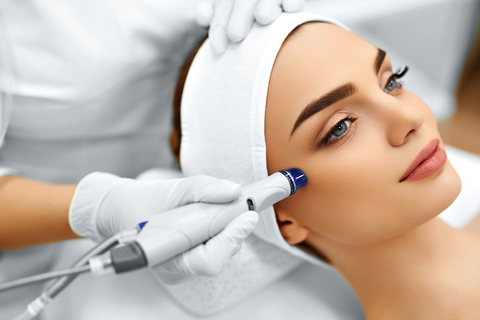Drawing on our freshly published Professional Skin Care: U.S. and Europe reports, Kline’s professional beauty and personal care experts answer five essential questions regarding the current state of this market.
1. What are the most important changes you have seen in the professional skin care market in 2015?
The professional skin care market in the United States continues to consolidate with Unilever acquiring Dermalogica and Murad, two leading brands in the spas and salons channel. A new online platform called RegimenMD is launched, helping plastic surgeons and dermatologists legitimately sell their products online and simultaneously eliminate online diversion.
In Europe, marketers further develop their advertising and marketing activities by implementing new strategies to boost brand visibility. Professional skin care brands like Murad, Elemis, and Dermalogica are beginning to offer their products through monthly subscription-based services, such as Glossy Box or Birchbox. In 2015, we also see a greater number of marketers interested in establishing franchised models of beauty institutes and spas, with some examples including Comfort Zone, Babor, Clarins, and Dr Irena Eris.
2. Do you see one channel of distribution gaining ground at the expense of others?
Yes! For the first time in the last eight years, the medical care providers channel overtakes spas and salons to become the largest channel in the United States. This change is mainly due to the U.S. financial downturn and recession in 2008 when the spas and salons channel was hit hard and witnessed declines until 2012.
In Europe, beauty institutes and salons remains the largest channel of distribution while the medical care providers channel grows the fastest by double digits in 2015. Among the factors contributing to this channel’s prosperity is the rising interest of male consumers seeking professional help for their skin care needs, particularly in non-surgical treatments, such as Botulinum toxin injections, microdermabrasion, and chemical peels.
3. Which new product launches were the most impressive in 2015? Did these products cater to a specific skin care need more than others?
Tinted and SPF-based moisturizers that provide anti-aging benefits show the highest number of launches in the United States in 2015. Some key launches include SkinCeuticals Physical Matte UV Defense SPF 50 by L’Oréal, Murad Invisiblur Perfecting Shield Broad Spectrum SPF 30 by Unilever, and Pevonia Youth Renew Tinted Cream SPF 30 by Pevonia. As predicted in a previous blog post, non-hydroquinone-based products remain consumers’ first choice for hyperpigmentation skin care concerns. Among the most notable product launches in this category are PCA Skin’s Intensive Brightening Treatment and Jan Marini’s Luminate Face Cream.
On the other hand, many European manufacturers introduce hydrating products based on essential oils and natural plant extracts popular for their hydration benefits. For example, Académie Scientifique de Beauté launches its Hydrating Treatment Oil containing green myrtle and absolute rose de mai essential oils, as well as raspberry and peach extracts, while Guinot launches a Moisturizing Shower Cream with argan, almond, and coconut oils.
4. What do you think are the top three trends we will see going forward in the United States with regards to the professional skin care market? How about in Europe?
In the United States, anti-aging products with skin firming and wrinkle reducing properties are expected to continue to boost sales and growth. Products that blur the distinction between skin care and makeup will also continue to be in demand. Lastly, innovation in both products and technology will enable marketers to differentiate and grow in this highly competitive market.
Similar to the United States, anti-aging products are expected to be the core driver of the professional skin care market’s growth in Europe. In addition, as consumers look for high-efficiency skin care products, specialty treatments and serums are expected to continue to be in high demand due to their specific benefits.
5. What can you tell us about individual country performances in Europe that might be surprising or markedly different than in 2014?
In 2015, most leading markets in Europe (the United Kingdom, Spain, Italy, Germany, France, and Poland) register sales growth, except Russia, which posts a sales decline rooted in local currency devaluation stemming from the political conflict between Russia and Ukraine. Spain and Italy also restore their sales growth, which prior to 2013 was heavily affected by a decrease in consumers’ spending related to sluggish local economies. The United Kingdom grows the fastest among the leading markets in 2015, with robust sales growth based in the country’s increased spending by consumers across all channels, particularly through medical care providers.
Stay tuned as the Canada, Brazil, and South Korea volumes will follow soon to complement our well-regarded series of reports on the professional skin care market.

